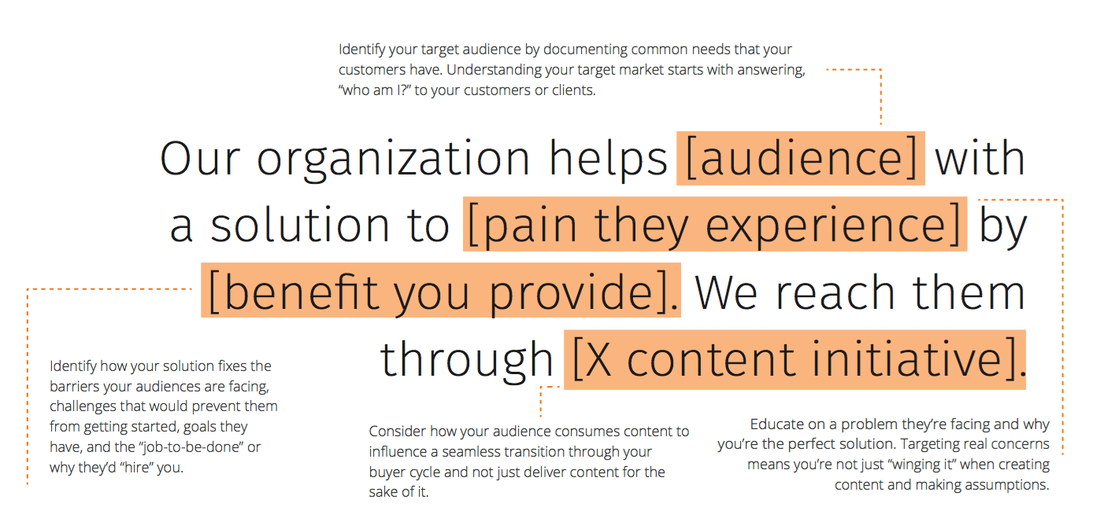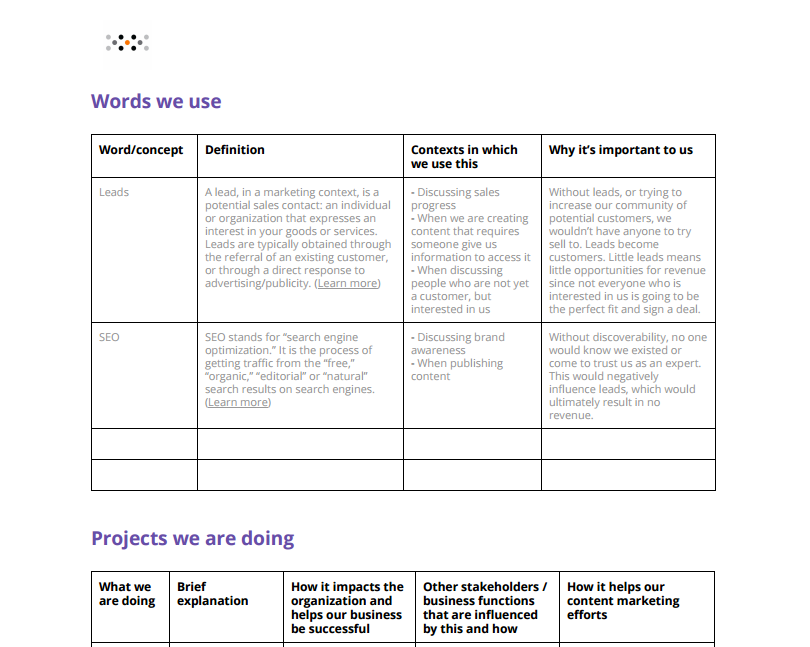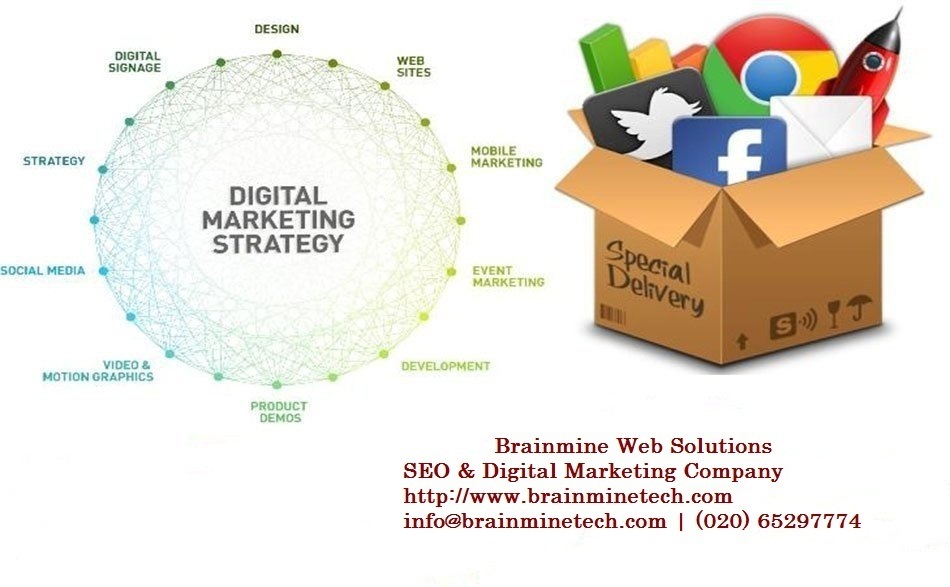|
Marketing is constantly evolving. So if you want to create a marketing plan for the coming year, you need all the most updated tools and strategies. Members of our small business community shared some of their top tips in posts this week. Check out ten of the best ways to update your marketing strategy in the list below.
Use These 20 Essential Marketing Tools If you want to take your marketing to the next level, you need the right tools. That means you likely need a lot of different marketing services that focus on different purposes. There are 20 different marketing tools that can be essential to your business listed in this Zaneguide post by Zane J. Heil. Factor the Effects of Decision Fatigue into Your Marketing Decision fatigue is a theory that can potentially keep your customers from making purchases. But if you factor that theory into your marketing, as this Two Feet Marketing post by David Lowbridge suggests, you can give your business a better chance. You can also see what BizSugar members had to say about the post here. Write Winning Content for Short Attention Span Readers Today’s consumers aren’t likely to spend a lot of time reading your content if it doesn’t grab their attention right away. That means you need to know how to write for readers with short attention spans, as this post by Lisa Froelings on The Sociable details. Get More Local Website Traffic For local businesses, online marketing is still essential. Local search tips like the ones in this Search Engine Journal post by Mandy Wodnick can help you get more local website traffic and reach more customers who are looking for businesses in your area. Achieve Marketing ROI With These Tips If you want your marketing efforts to be successful, you need a real plan and the ability to actually measure results, as detailed in this post by Rachel Strella of Strella Social Media. You can also see discussion about the post by BizSugar members here. Use A/B Testing to Build Buyer Personas If you want to effectively market your business, you need to create accurate buyer personas to give you an idea about who you’re marketing to. And you can use A/B testing to achieve that thanks to the information in this Kissmetrics post by Aaron Agius. Make Your Blog Visually Appealing Blogs can be great marketing tools for businesses. But you need your blog to visually appeal to readers and potential customers if you want it to have any impact. These tips from Neil Patel offer some ways for you to make your blog more visually appealing. Get Influencers to Read Your Blog Posts In addition, influencers can have a big impact on the effectiveness of your blog posts. This post by Tony Paull of Tony Paull Consulting features some ways you can get influencers to read your blog posts. And members of the BizSugar community also comment on the post here. Consider These Small Business Conferences for 2017 Conferences can be a great way to network and improve your business’s reach. And there are many different small business conferences throughout the year for you to consider. Here are some for 2017 shared by Nicholas Milewski on the Plousio blog. Dial in Your Visual Ads When it comes to visual advertising, there are many different online tools and platforms you can use to create your strategy. This Marketing Land post by Brad O’Brien includes some tips for using platforms like Pinterest and Snapchat to dial in your visual ads. If you’d like to suggest your favorite small business content to be considered for an upcoming community roundup, please send your news tips to: sbtips@gmail.com. Source: https://smallbiztrends.com/2016/11/10-ways-update-marketing-strategy-2017.html By Melinda Emerson On 10/11/2016
It's almost Thanksgiving, and that means it's time to get your plans together for how you will generate even more revenue in 2017. Whether your business counts on holiday shopping to boost revenues, or it's a ghost town in your office after Turkey Day. Regardless, it's time re-boot your small business marketing efforts. You want to look at your revenues for the year, who were you top customers or product sales, and you'll want to evaluate your close ratios to see what closed and and how long it took. As you look toward the new year and think new plan. Here are some ideas for updating your marketing plan for 2017. Fine-Tune Your Marketing Plan A strong marketing strategy is key to ensuring your product is seen by your potential customers. A good starting point for doing this is reassessing your market by answering some fundamental questions:
Your answers will help you shape your marketing strategy. When you have done this, it's time to define your ideal customer: Source: http://www.huffingtonpost.in/entry/is-your-marketing-plan-re_b_12892202 60% of your customers engage first with your content before anyone in your team.
Content marketing is the foundation upon which your business operates. From the story told on your website, through to learning materials, you’re producing content. Still, majority of businesses neglect the importance that content plays in business success. Strong content strategies empower your entire organization. From sales to human resources, great content has the ability to help with revenue generation, internal culture, external recruitment, and build positive sentiment not just with potential buyers, but anyone who comes across your brand. Here’s 4 ways to meaningful bring understanding across the organization on what content marketing is and how it’s helping the business strategically: Create a strategic plan tied that maps content efforts directly to business objectives. Having a defined strategy for what you’re going to achieve, why, and a roadmap to get there encourages a collaborative approach to business success. Outside of the marketing team there’s often not a clear understanding of the eventual outcome your content is aiming to achieve. SEO, lead gen, optimization… What do they mean? In addition, if you were to ask, “what’s the goal of our content?” you’d probably get a blank stare. These questions create uncertainty around how content marketing is contributing specifically to business objective. To move content marketing from just a department within your organization to a strategic driving revenue force you have to move perceptions of marketing away from just the department that manages your brand. These five questions are a great place to start to map content marketing to business goals:
Once you’ve documented how content trickles from a medium to educate prospects through to converted revenue, share progress via bi-weekly updates on key projects that are making an impact on business success. Create and share a list of common terms, projects, and ways you measure success.Outside of the marketing team there’s often not a clear understanding of the outcome content is aiming to achieve. SEO, lead gen, optimization… What do they mean? If you were to ask, “what’s the goal of our content?” you’d get a blank stare. A simple, yet challenging question that most businesses rarely ask themselves. But, the answer is easy—to gain more customers and keep them. Move perceptions of marketing away from just a department that manages brand. This will transform content from just a department to a revenue incubator. You’re in the business of content whether you like it or not. One way to rally everyone behind content marketing as a strategic function of the business is through creating a common language. Document how content trickles throughout other business functions. Answer how now just the marketing team is going to leverage content to drive revenue, but opportunities for all team members to leverage content. Content marketing should be presented as a business opportunity to empower each department uniquely. The sales cycle, recruitment opportunities, loyalty campaigns… Conte isn’t just a bundle of marketing resources, but a serious revenue generator. Creating a universally understood language means everyone can relate to what you’re saying. It’s also beneficial for new hires! Documentation helps those who join ramp up that much quicker. Include your entire organization in content creation and distribution can lead to perspective sharing and new ideas that take your strategy to the next level.This doesn’t mean that anyone should be able to freely publish content publicly, you should stick to your internal workflow structure to ensure your brand messaging and goals are aligned. However, every employee in your organization should be able to, and more importantly, encouraged to participate in the content creation process. Getting started:
Define success of content initiatives in metrics that other departments are also using, such as revenue.A new webinar, for example, will get the business 100 new leads in the short-term, boost brand awareness, and increase web traffic. Long-term, the same webinar contributed to the bottom-line of closing $100,000 new sales in the quarter. Each webinar created, marketed, and executed captures more leads, builds brand trust, which all feed a marketing funnel. Business track success in revenue growth. By continuously thinking of how your content impacts revenue, you can bring everyone on the same page when it comes to the impact of content on the bottom-line. All these efforts work in various ways to help with conversion to revenue. But, how do you get started proving that connection and showing ROI? Think backwards. Working backwards from strategic business goals insures you’re not creating content for the sake of it, but you’re focused on the right content to deliver on the bottom-line every time. Ask yourself what each campaign created is hoping to get you. If your goal is to land $100,000 in new sales, think to the prerequisites needed to make a sale:
In the list above, it’s clear what content activities are directly tied to the strategic bottom-line of increasing revenue. While the direct impact of blog X compared to blog Y might be difficult to prove, a documented strategic plan clearly highlights what metrics matter, what content is contributing to what metric, and provides a quantifiable foundation to benchmark against. Being a data-driven comes to always insuring the following two questions get answered:
If you’re unsure, always default to asking, does the metric you’re using to identify success help you make decisions? Do you know what you need to do to execute and make it happen? If you don’t, you’re probably not linking content output to the right metric. Remember, all of this is only possible if you have a centralized strategy: content data, brand guidelines, who you’re speaking to and why—all this information needs to be centralized across all departments. This ensures your brand story is cohesive. The benefits? Maximized content reach and increased revenue opportunities. Use this free template to brainstorm everything that matters to your team from terms used to strategic goals your content efforts are aiming to meet. by Ashwani Fotedar On 3 November 2016 You agree that this is the age of digital? In fact you are already engaged in digital marketing of your business or have started thinking about it. After all, how can one not notice the pace at which internet is overtaking traditional methods of communication?
Okay, you have jumped into the world of digital marketing. And you have strong expectations to get the most out of your advertising and marketing activities. Engaging digital channels is definitely a step in the right direction, a way to benefit the most from your marketing spend. But are you doing it randomly or you have a well-thought digital marketing strategy to guide you through? Any business or brand can reach to millions of viewers through internet but do you know where exactly to look for your customers? Your business gains recognition, millions of people pass through your advertisement while running around the digital universe. But are you able to make the right ones stop by, ‘listen’ to your message and take the next step? Doing digital without a digital marketing strategy may seem okay on the surface but the fact is that without a well-laid out internet marketing plan you may lose your purpose. So, how important is it to have a digital marketing strategy? A digital marketing strategy gives direction to your marketing Like any successful business project, online marketing or digital marketing too demands a wholesome strategy and cohesive planning. You will likely waste your resources and never truthfully contribute to your business without a strong digital marketing strategy to start with. Your digital marketing strategy will be your written plan about what, when and how of using the several online marketing channels and resources. Only a well-thought strategy can give you the benefit of an efficiently managed and controlled execution of your marketing initiatives in the digital space.To have a general marketing goal like increase sales or boost online engagement is too vague. A focused digital strategy will guide you to specific goals and help you keep track of your advancement towards achieving that goals.It will keep your business, marketing team and agency moving in the same direction towards the same set of goals. You connect better by focusing on your target Audience By creating a purposeful digital marketing strategy you lay out a plan to reach your specific target audience and not just random people at large. Your digital strategy will keep you focused on your prospective customers by helping you define, identify and understand them. It will guide you on how to reach them effectively via the platforms they prefer to engage with. There are numerous online channels that are available to people to find products, services and information. While some may like to do a Google search, while others may spend more time on Facebook to know which brand or product is more popular than others. A digital strategy will be of great benefit here as it will help you discover which digital channels will yield the best results for you. You keep strong track of your progress to optimize your digital marketing If everyone is getting into the digital mania then what will keep you ahead of competition? What will help you crack the digital in the best way? How will know what is working for you and what is not? What will you compare your results with? Have a structured digital strategy and include analytics. Doing so will help you keep track of changes in your customer’s online behavior. This information is crucial for success of your marketing initiatives. You can make changes based on such information to take your digital marketing in the right direction. To your great benefit, a digital strategy will give you ground to go back and review what worked and what did not work. Thus providing you with the basis to optimize your strategy and streamline its execution. You will have right benchmarks and a straightforward approach. Source: https://yourstory.com/2016/11/bdeea0b4a2-why-not-having-a-digital-marketing-strategy-is-a-waste-of-your-marketing-efforts/ Think that it takes lots of money to market your business effectively? Nope. There are a number of online marketing tools now available to help you attract and sell to more customers without costing you a dime.
Here are five of the most effective marketing tools your business should be already using: Facebook groups Facebook groups are free, they’re easy to create, and they provide a way for you to talk directly to your biggest fans – your customers. Facebook groups are communities, unlike Facebook pages, which are essentially public bulletin boards. Since you can control who is allowed in your group, you can monitor the information that is shared and set the tone for discussions. Groups are a very cost-effective way to inform prospects and customers about your business and to start building a relationship with them. You can use your group to share news of the latest inventory to come in, as NTY Clothing Exchange does with their videos of designer purses now available. Share photos of holiday decorations you’ve set up, to entice shoppers to stop by and see them. Or start conversations that help you better serve your customers, such as through polls or fun prompts. Clothing retailer LuLaRoe uses Facebook groups as a sales channel, supplemented with Facebook Live video chats. Also On FORBES: YouTube While some business owners may be reluctant to jump on the video bandwagon because they don’t like seeing themselves on camera, statistics show that consumers are rabid for video content. They don’t care what you look like if the information is useful or entertaining or interesting. Video is another effective and inexpensive way for prospects and customers to get to know you. Use your smartphone to record yourself, upload it to YouTube, and then share it with your customer base. You’ll probably be surprised by the amount of people who watch it. If you have no idea what to talk about on-camera, here are some ideas to get you started: talk about and showcase your new inventory, demonstrate how to use a popular item in your store, address the most common question you’re asked about your business or help customers deal with a common problem. Videos can be as short as two minutes or as long as an hour – whatever length you think your audience wants. You can use them to position yourself as the expert in your field, by offering a helpful tutorial on a subject your customers want to know more about. All at no cost. Help a Reporter Even if you have no budget for advertising, you can certainly invest time in pursuing publicity opportunities. Publicity involves persuading the media to write about you, mainly in articles and blog posts. Success is being quoted in an article in a newspaper, magazine, or on a website your target market pays attention to. So how can you get the attention of busy reporters and writers? Pay attention to the articles they’re working on and the types of sources they need. To find that out, all you need to do is subscribe to HelpaReporter.com, at no cost. SurveyMonkey Successful companies know a lot about their prospects and customers, including who they are, what they buy, why they buy it, and more. Without a massive market research budget, how can you gather some of these insights? By using SurveyMonkey, a free tool for creating short online surveys. You can create a simple questionnaire using SurveyMonkey and share it with your Facebook group; include a link on receipts, perhaps with a small incentive for filling it out; mention it in a customer newsletter or email your entire mailing list to ask that they complete it. Specific questions are best, such as, “What day are you most likely to shop with us?” Or, “What product or service do you wish we carried?” Or even, “What one change could we make that would cause you to buy from us more often?” Then use the responses to make adjustments and earn more of their business. Google Alerts One of the best tools for competitive intelligence, blog post fodder, and market research rolled into one is Google’s free alert service. It’s useful for staying on top of particular companies, issues, products, or topics of interest, simply by setting up an alert that triggers an email to you whenever keywords you’ve entered appear online. Given the ongoing need for social media content, Google Alerts can be a lifesaver for coming up with new ideas to write about. Create alerts for subjects your customers are interested in or that are related to your products and services. Then, when related emails arrive in your inbox, set them aside to use as inspiration the next time you have to pen a blog post, draft a customer newsletter, or share a Facebook or LinkedIn update. Marcia Layton Turner writes frequently for and about small business. She is the author of The Unofficial Guide to Starting a Small Businessand many others. Source: http://www.forbes.com/sites/marciaturner/2016/10/31/5-free-marketing-tools-small-businesses-cant-afford-to-ignore/#46a9e8137173 |
Marcus Guiliano
Catch up on my current posts along with industry articles Archives
March 2020
Categories |
Marcus Guiliano Productions LTD
PO Box 731
Ellenville NY 12428
(845) 647-3000
www.MarcusGuiliano.com
Disclaimer
This site is not a part of the Facebook website or Facebook Inc. Additionally, This site is
NOT endorsed by Facebook in any way. FACEBOOK is a trademark of FACEBOOK, Inc.
DISCLAIMER: The sales figures stated above are my personal sales figures. Please understand my results are not typical, I’m not implying you’ll duplicate them (or do anything for that matter). I have the benefit of practicing direct response marketing and advertising since 2009, and have an established following as a result. The average person who buys any "how to" information gets little to no results. I’m using these references for example purposes only. Your results will vary and depend on many factors …including but not limited to your background, experience, and work ethic. All business entails risk as well as massive and consistent effort and action. If you're not willing to accept that, please DO NOT GET OUR INFORMATION.
This site is not a part of the Facebook website or Facebook Inc. Additionally, This site is
NOT endorsed by Facebook in any way. FACEBOOK is a trademark of FACEBOOK, Inc.
DISCLAIMER: The sales figures stated above are my personal sales figures. Please understand my results are not typical, I’m not implying you’ll duplicate them (or do anything for that matter). I have the benefit of practicing direct response marketing and advertising since 2009, and have an established following as a result. The average person who buys any "how to" information gets little to no results. I’m using these references for example purposes only. Your results will vary and depend on many factors …including but not limited to your background, experience, and work ethic. All business entails risk as well as massive and consistent effort and action. If you're not willing to accept that, please DO NOT GET OUR INFORMATION.







 RSS Feed
RSS Feed
